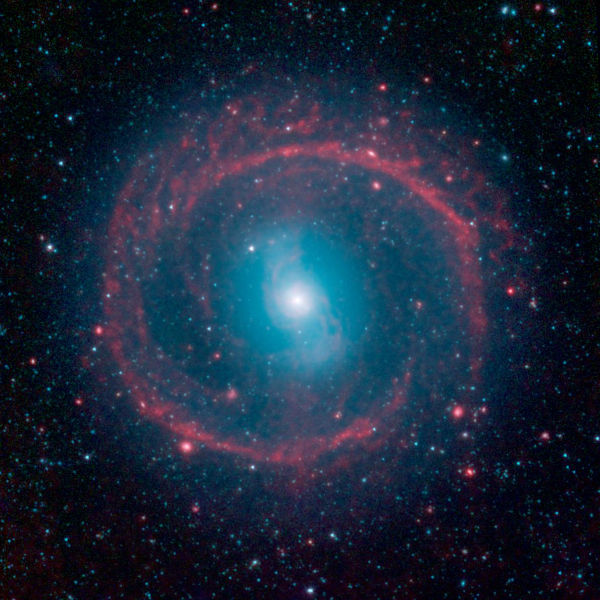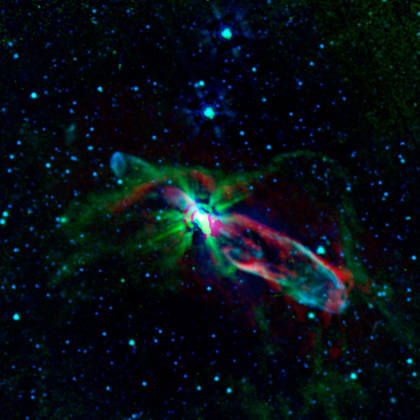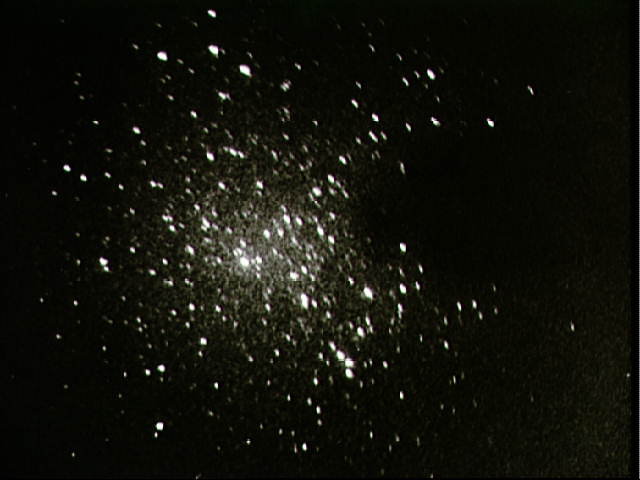
What do new young stars look like as they heat up the surrounding space dust? The Spitzer Space Telescope looked out to the galaxy NGC 1291 and captured an infrared image of quite the firestorm created by this awe inspiring phenomenon. The distinctive outer red ring in this 12 billion year old galaxy from the Eridanus constellation, consists of new stars and is the “Ring of Fire“. The older stars lie in the central blue coloured “S” area of the galaxy and produce shorter-wavelength infrared light.



